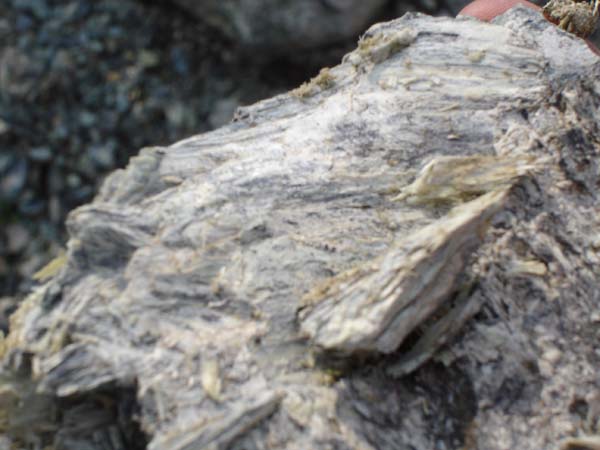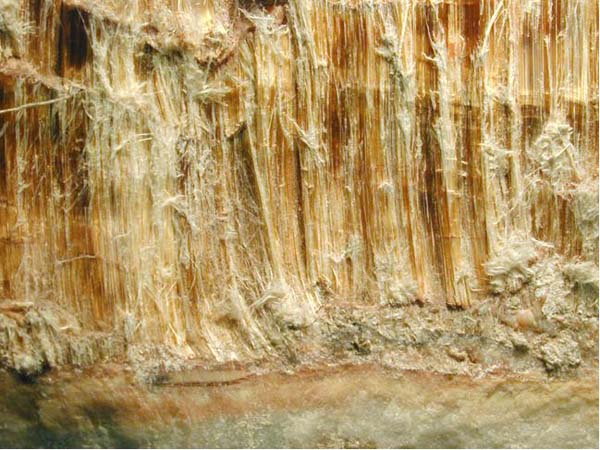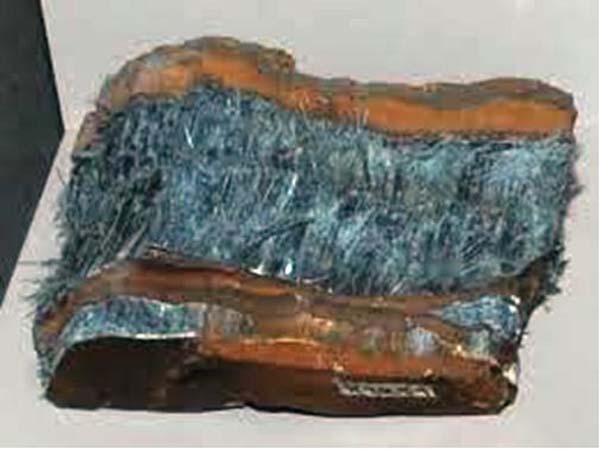Asbestos is the name given to a group of minerals that occur naturally in the environment as bundles of fibers that can be separated into thin, durable fibrils. These fibers are resistant to heat, fire, and chemicals and do not conduct electricity. For these reasons, asbestos has been used widely in many industries.
Chemically, asbestos minerals are silicate compounds, meaning they contain atoms of silicon and oxygen in their molecular structure.
Asbestos minerals are divided into two major groups: Serpentine asbestos and amphibole asbestos. Serpentine asbestos includes the mineral chrysotile, which has long, curly fibers that can be woven. Chrysotile asbestos is the form that has been used most widely in commercial applications. Amphibole asbestos includes the minerals actinolite, tremolite, anthophyllite, crocidolite, and amosite. Amphibole asbestos has straight, needle-like fibers that are more brittle than those of serpentine asbestos and cannot be woven.
 Chrysotile Asbestos Mineral
Chrysotile Asbestos Mineral
 Fibrous Chrysotile Asbestos
Fibrous Chrysotile Asbestos
 Amosite Asbestos
Amosite Asbestos
 Crocidolite Asbestos
Crocidolite Asbestos
Asbestos has been used for more than 2,000 years. It was named by the Ancient Greeks, its name meaning "inextinguishable". In 430 BC the early Greek geographer Pausanias wrote about golden lamps with incombustible wicks of “Carpathian flax”.
The Greeks also noted its harmful biological effects. Even though the Greek geographer Strabo and the Roman naturalist Pliny the Elder both observed the "sickness of the lungs" in the slaves that wove asbestos into cloth, they were in such awe of asbestos' seemingly magical properties that they ignored the symptoms.
Asbestos is found across the globe, including in the United States, South Africa, Canada and areas of the former Soviet Union. Asbestos is found in 20 of the United States and has been mined in 17 of these states, including the Appalachian region, California and Oregon. Chrysotile is the most commonly mined and most commonly used form of asbestos. In 2005, Russia accounted for 40% of the asbestos produced in the world, with China and Kazakhstan also producing significant amounts. Tremolite asbestos is mined in small amounts in India. Use of asbestos continues in developing countries, especially those like India and China where a great deal of growth is occurring. An advocacy organization called the International Ban Asbestos Secretariat is working to pass bans on asbestos in more countries across the globe.
In Greece we can find asbestos in Western Macedonia and Epirus.
Asbestos Applications
The U.S. asbestos industry began in 1858 when fibrous anthophyllite was mined for use as asbestos insulation by the Johns Company, a predecessor to the current Johns Manville at a quarry at Ward's Hill on Staten Island, New York. Asbestos became more widespread during the industrial revolution; in 1866 it was used as insulation in the U.S. and Canada. Development of the first commercial asbestos mine began in 1874 in the Appalachian foothills of Quebec. By the mid 20th century uses included fire retardant coatings, concrete, bricks, pipes and fireplace cement, heat, fire, and acid resistant gaskets, pipe insulation, ceiling insulation, fireproof drywall, flooring, roofing, lawn furniture, and drywall joint compound.
Asbestos fibers were once used in automobile brake pads, shoes, and clutch discs.
Asbestos products in usage order:
• Asbestos cement
• Sprayed asbestos
• Lagging
• Asbestos insulating board
• Asbestos textiles
• Other asbestos products
In Greece asbestos was used mostly in the form of asbestos cement. Greece was one of the major producers and exporters of asbestos products. In 1997, Greece was 7th in the catalog of the asbestos producing countries with a production of 100.000 tons per year.